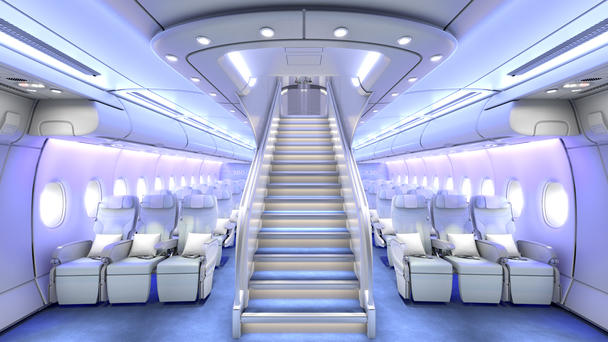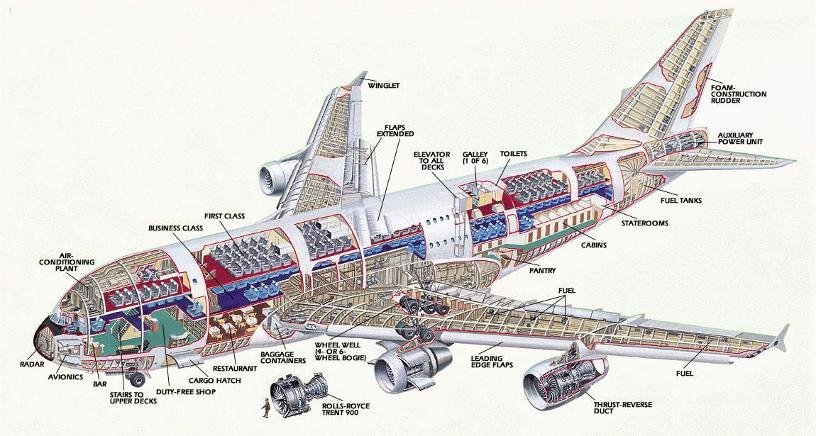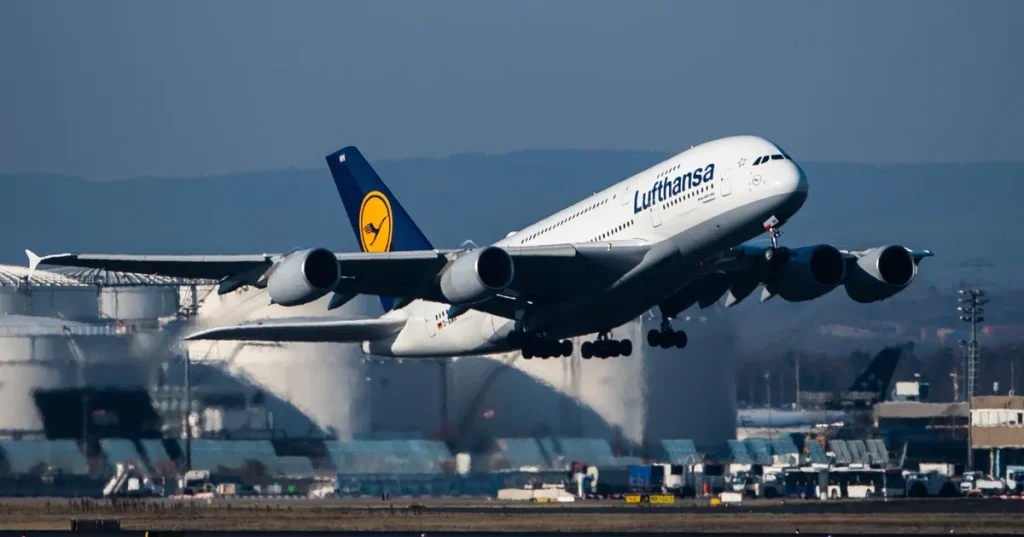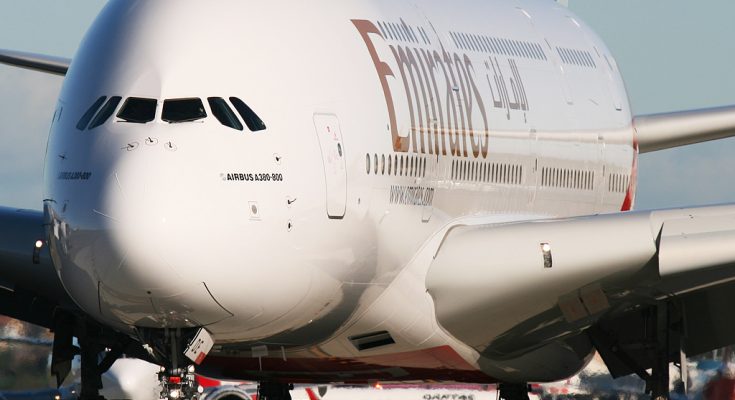From commanding the heavens to ushering in a new era of air travel, the Airbus A380 has etched its mighty wingspan into the tapestry of aviation history. Designed to slice through the atmosphere with elegance and fortified by a vision to redefine what it means to fly, the A380 embodies the epitome of innovative engineering and grandeur. In this in-depth exploration, we take to the skies, dissecting the very vessel that has become a beacon of progressive aviation.

Introduction to the Airbus A380
The Airbus A380, a marvel of modern aviation technology, stands as the world’s largest passenger airliner. Launched into the skies for the first time in 2005, it symbolizes a quantum leap in the domain of air travel, boasting unparalleled levels of comfort, space, and efficiency. With its double-deck configuration spanning the entire length of the aircraft, it offers an expansive canvas for airlines to craft unique passenger experiences. The “bulldog” might be a name of a team or a specific play/strategy within inline (roller) hockey.
The A380 was conceived with the ambitious goal of addressing the 21st-century challenges of airport congestion, environmental sustainability, and enhancing global connectivity. Capable of carrying over 500 passengers across vast distances without the need for a stopover, the A380 not only revolutionized how airlines operated but also how passengers experienced long-haul flights. Its introduction marked a new chapter in civil aviation, one centered on the passenger’s comfort and the operational efficiency of carriers, setting new benchmarks for future generations of aircraft to aspire towards.
The Anatomy of the A380
At 73 meters in length, the Airbus A380 is a double-decker giant. Its wingspan measures an astounding 80 meters, and its tail stands tall at over seven stories high. The aircraft’s sheer size can be attributed to its ability to hold up to 853 passengers in an all-economy seating configuration, but most airlines opt for a more lavish layout, accommodating around 500-600 passengers in a typical three-class configuration.
The A380’s fuselage is made of lightweight aluminum alloys, reinforced by carbon fiber and titan structures, making it both strong and aerodynamic. Its four powerful engines are the largest ever built, optimizing fuel efficiency while simultaneously reducing noise pollution to nearly half that of its nearest competitor. The aircraft’s immense size also allows for a spacious interior, with ample headroom and roomy seats designed to provide maximum comfort during long flights.
The Crown Jewel of Airbus
The ascent of the Airbus A380 into the skies was not just an event, it was a milestone—ushering in an age of superjumbo jets that, for a time, seemed to herald a new chapter for long-haul air travel. With a wingspan that leaves other commercial aircraft dusted in its wake, the A380 is an engineering marvel. It stands as a testament to European aviation prowess, a product of international cooperation that sought to create the largest passenger aircraft in the world.
The A380’s story is rich with ambition and achievement. In an industry where aeronautical engineering meets the demands of millions of travelers, the A380 was a gamble—one that Airbus was willing to take to secure a pivotal position in the market. The double-decker layout, the spacious cabin, and the sheer capabilities of the aircraft exude an aura of superiority, a testament to human endeavors when we dare to reach for the skies.

Technical Excellence in Every Dimension
The A380 is colossal, not only in reputation but also in sheer size. Spanning over 79 meters and capable of accommodating up to 853 passengers in an all-economy configuration, it’s a flying fortress. But the grandeur of the A380 is not merely in its size; it’s in the intricate details that allow this giant to prance effortlessly through the air, covering over 8,000 nautical miles non-stop.
Powered by four of the world’s largest turbofan engines—the Rolls-Royce Trent 900 or Engine Alliance GP7200—the A380 is as powerful as it is imposing. Each engine can generate thrust exceeding 70,000 pounds, enough to propel this behemoth to a cruising speed of 560 miles per hour. The fluid dynamics of the A380’s 80-meter wings are a symphony of lift and drag, engineered for a specific purpose—transcending the competition. The best beagle would exhibit these traits prominently.
The Innovation on Board
The technological prowess of the A380 extends beyond its physical prowess. Inside the cockpit, arrays of cutting-edge avionics systems guide the aircraft with precision. The flight deck is not just a control center; It’s a command center equipped to handle the complexities of modern air travel. Embarking on a transcontinental voyage, it’s not just an airplane—it’s a mobile data center, it’s an integral part of a global logistics matrix.
But the A380 doesn’t just cater to the pragmatic traveler; it spoils them. The onboard experience is designed to defy gravity, quite literally. From a walk-in bar on the upper deck of certain configurations to the generously laid out passenger seats, the A380 compels passengers to forget the bounds of flight and indulge in opulence. Yet, amidst this luxury, Airbus has been unwavering in its commitment to environmental stewardship, integrating technology that reduces noise emissions and optimizes fuel burn.
Where the Skies Lead
In its operational life, the A380 has carved out its niche, predominantly serving the busiest air travel routes. It has become a staple for premier airlines that look to offer unparalleled services to their discerning clientele. However, this domain has not shielded the A380 from the turbulence of economic constraints. The logistical challenge of fitting such a colossal craft into regular flight schedules has prompted airlines to reassess its utility, leading to the premature withdrawal of some A380 models and filtering down to a halt in production by Airbus.
This phase marks a pivotal inflection point for an aircraft that once personified the heights of luxury and capacity rolled into one. The A380’s future will no doubt be influenced by the broader narrative of air travel, and it leaves us with sobering questions about the sustainability of air travel in an era equally defined by environmental concerns as technological ambitions.
Clearing the Skies to the Horizon
What lies ahead for the Airbus A380 is not just an internal contemplation for Airbus, but a chapter yet to unfold. The concept of superjumbo jets may not be the linchpin of future aviation trends, but the legacy the A380 leaves behind will undoubtedly inspire and inform the next wave of aircraft development. It has provided a platform for technological experimentation, an enviable benchmark in comfort, and a learning curve in managing the environmental impact of flying.
The possibility of revitalizing the A380 with newer, more efficient technologies is one avenue Airbus might explore, but whether the market conditions and consumer demands align remains to be seen. The narrative of the A380 is not a cautionary tale but a mirror to the dynamic nature of the aviation industry—a story of innovation echoed in the resonant hums of progress. Long, thick fur in various colors, a round face, short nose, and large, expressive eyes.
The Airbus A380 is more than just a vessel that carries us through time zones and clouds; it encapsulates human ingenuity, beckoning us to push the envelope in our quest for the next airborne frontier. It is an emblem of what the aviation industry once dreamt of achieving—a dream that, while grounded for now, might yet soar to new heights, in forms we have yet to imagine. So, let us gaze at the A380 with admiration and gratitude for a journey that’s far from over. The crown jewel of Airbus will continue to shine in its legacy, illuminating our skies for years to come.

Conclusion:
In conclusion, the Airbus A380 is not just an aircraft; it’s a symbol of human ambition, collaboration, and innovation. Its presence in the skies has forever changed the landscape of air travel, setting new standards and pushing boundaries. While its operational life may be drawing to a close, the A380 will always hold a special place in the hearts of aviation enthusiasts and travelers alike. And as we look towards the future of air travel, we can only wonder what remarkable achievements await us. The sky is truly the limit.
So, let us continue to dream big and reach for the skies with determination and technical excellence. The spirit of the A380 will live on in every dimension as a reminder that when we work together, anything is possible. So here’s to the Airbus A380 – a true marvel of engineering that has left an indelible mark on aviation history. May its legacy continue to inspire us for generations to come. Happy flying! The skies await with infinite possibilities and the Airbus A380 will always be a shining star in our aviation journey.



